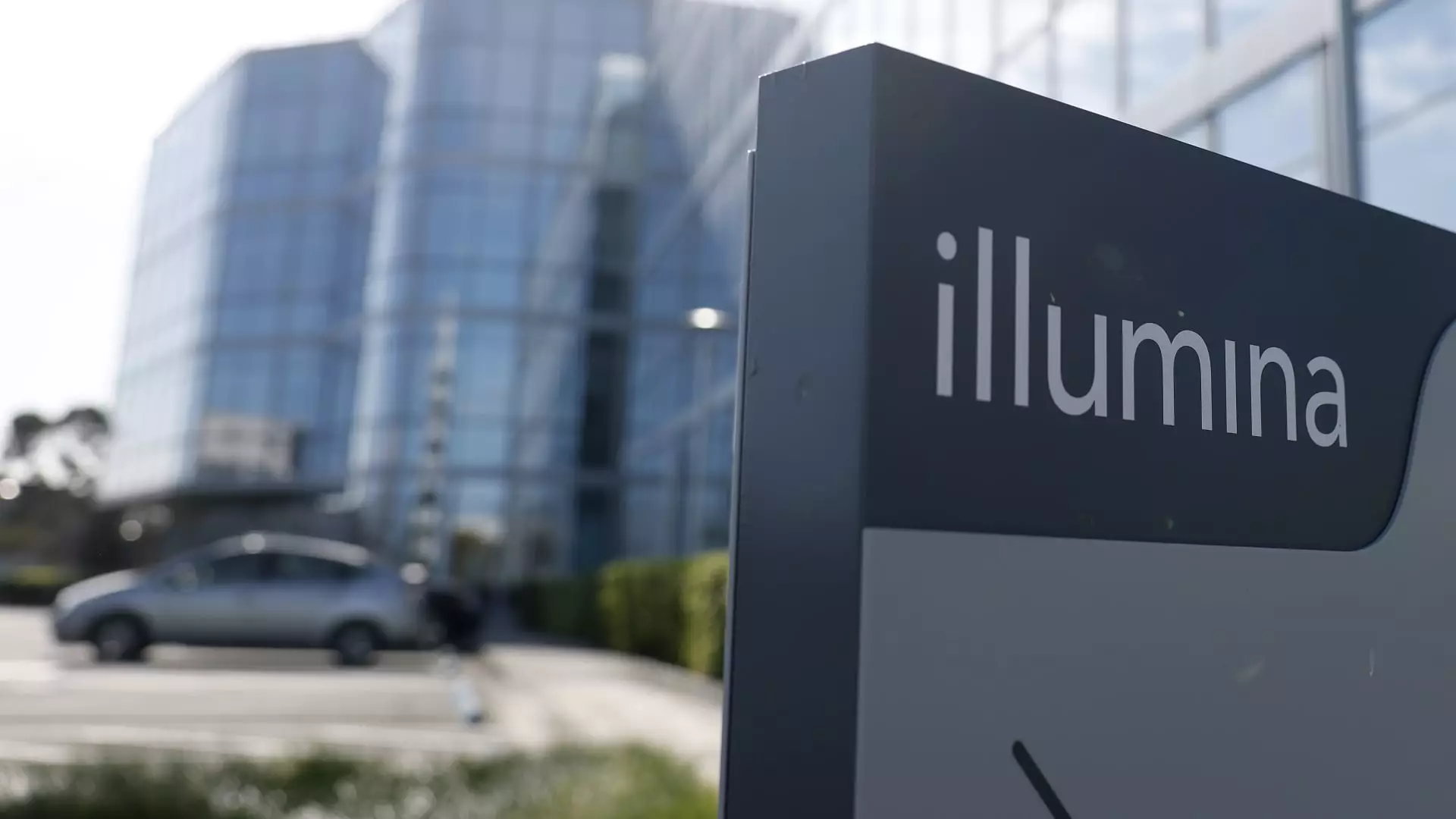Illumina, once revered as a beacon of innovation in the biotechnology sector, finds itself navigating treacherous waters. With a staggering market valuation plunge from $70 billion to an astonishingly low $12.67 billion, looming questions arise about its future. The company’s pioneering DNA sequencing technology, which flourished during the urgent needs of the COVID-19 pandemic, has since unraveled into a narrative steeped in mismanagement and misjudgment. Illumina’s tumultuous journey is a case study of how a market leader can rapidly lose its footing due to a combination of overzealous expansion, misguided acquisitions, and external pressures.
For a company that once boasted revenue surges of up to 40%, a mere $4.3 billion in revenue—paired with an EBITDA of $900 million—now feels like a major defeat. Not only has Illumina’s revenue dipped but its stock price has also come crashing down from a peak of $511 to a disheartening $80. The trajectory of decline reveals a systemic failure to adequately respond to post-pandemic realities. Allegations of poor decisions and an inability to reset expectations have led analysts to question the company’s strategic direction.
The Grail Debacle: An Expensive Learning Curve
Perhaps the main culprit behind Illumina’s decline can be traced back to its infamous dealings with Grail. The story of Grail is a cautionary tale about ambition exceeding capacity. Illumina initially created Grail in 2015, later spinning it out and retaining a minority stake. The decision to reacquire Grail for a staggering $8 billion amid regulatory scrutiny seemed reckless in hindsight. Not only did the Federal Trade Commission and European Union block the deal, but the ensuing legal battles and hefty fines further marred Illumina’s public image and dwindling resources.
Despite activist pressure from Carl Icahn through Corvex Management, the hasty decision to reacquire Grail compounded Illumina’s woes. The eventual spin-off of Grail in June 2024, while seen by some as a ‘solution’, merely emphasized Illumina’s erratic strategies and lack of foresight. It’s hard not to view these missteps as symptomatic of deeper issues within the leadership that failed to execute a coherent, long-term vision.
Leadership Challenges and the Need for Change
The appointment of Keith Meister to the board marks a chief signal of the company’s attempt at rejuvenating its governance. With backers such as Corvex Management pushing for reform, one hopes that a more methodical approach might emerge. But, one cannot help but wonder if these changes come too late. Illumina’s organizational culture has long been criticized for lacking agility, and without a significant shift, the company risks remaining stagnant.
Scott Gottlieb’s election as non-executive chair and Stephen MacMillan’s retirement are indicative of a leadership reshuffle, but true cultural reinvention requires more than just new faces. It requires a commitment to accountability, transparency, and a willingness to engage genuinely with market dynamics. Unfortunately, Illumina’s previous management style often seemed dismissive of these principles, pushing for aggressive expansion at the cost of robust operational fundamentals.
New Opportunities amidst Global Challenges
What remains, however, is Illumina’s significant share of the gene-sequencing market, controlling over 80%. This stranglehold provides an opportunity to pivot. The razor-and-blade business model allows for sustained revenue through high-margin consumables, alongside a sound strategy for the emergence of the next-generation NovaSeq X technology. While it’s evident that a transition phase is next for the company, it’s crucial that Illumina does not stumble through a repeat of past errors.
Geopolitical tensions involving Russia and China have complicated matters further, posing risks that go beyond corporate governance. The uncertainty surrounding funding for the National Institutes of Health looms large as well, creating an environment of doubt for investors. How Illumina plans to weather these multifaceted challenges will determine its ability to reclaim its position as an industry leader.
The upcoming quarters promise to be critical for Illumina. The impending transition to advanced sequencing technologies, paired with a granular evaluation of its market positioning and strategic execution, will be crucial. Stakeholders must now ask: Can Illumina recalibrate its ambitious vision and execute it effectively without history repeating itself? Time will tell if the fresh board is capable of confronting the real-world implications of past mistakes and charting a renewed and sustainable path forward.

